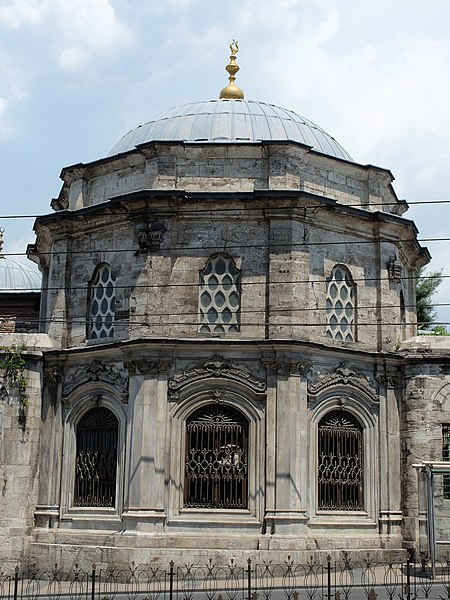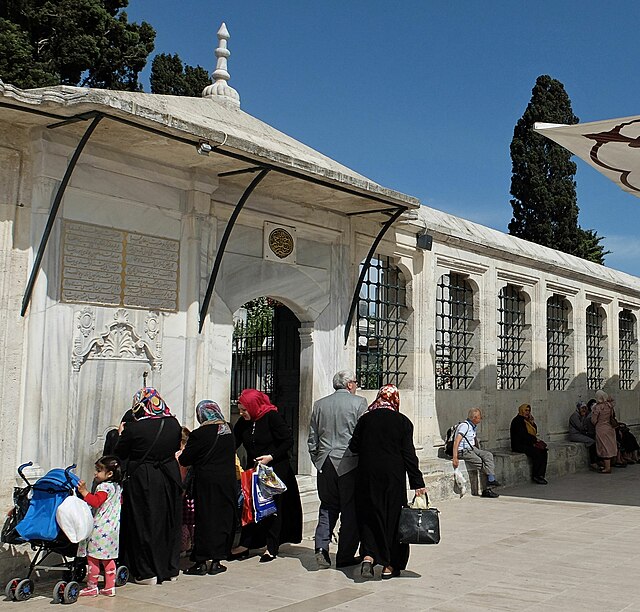Ottoman Baroque architecture
Ottoman Baroque architecture, also known as Turkish Baroque, was a period in Ottoman architecture in the 18th century and early 19th century which was influenced by European Baroque architecture. Preceded by the changes of the Tulip Period and Tulip Period architecture, the style marked a significant departure from the classical style of Ottoman architecture and introduced new decorative forms to mostly traditional Ottoman building types. It emerged in the 1740s during the reign of Mahmud I (1730–1754) and its most important early monument was the Nuruosmaniye Mosque, completed in 1755. Later in the 18th century, new building types were also introduced based on European influences. The last fully Baroque monuments, such as the Nusretiye Mosque, were built by Mahmud II in the early 19th century, but during this period new European-influenced styles were introduced and supplanted the Baroque.
Image: Nuruosmaniye Camii
Image: Laleli Mosque tomb exterior DSCF5984
Image: Mihrisah Sultan Complex Eyup DSCF7830
Entrance to the Fatih Mosque's cemetery, with the Fountain of Nisançı Ahmed Pasha (1741–42) on the far left
Ottoman architecture is an architectural style or tradition that developed under the Ottoman Empire over a long period, undergoing some significant changes during its history. It first emerged in northwestern Anatolia in the late 13th century and developed from earlier Seljuk Turkish architecture, with influences from Byzantine and Iranian architecture along with other architectural traditions in the Middle East. Early Ottoman architecture experimented with multiple building types over the course of the 13th to 15th centuries, progressively evolving into the classical Ottoman style of the 16th and 17th centuries. This style was a mixture of native Turkish tradition and influences from the Hagia Sophia, resulting in monumental mosque buildings focused around a high central dome with a varying number of semi-domes. The most important architect of the classical period is Mimar Sinan, whose major works include the Şehzade Mosque, Süleymaniye Mosque, and Selimiye Mosque. The second half of the 16th century also saw the apogee of certain decorative arts, most notably in the use of Iznik tiles.

Blue Mosque in Istanbul, an example of the classical style of Ottoman architecture, showing Byzantine influence.
Hacı Özbek Mosque in Iznik (1333), one of the earliest surviving Ottoman mosques
Green Mosque in Iznik (1378–1391)
Green Mosque interior: "Turkish triangles" form the transition from dome to square chamber








